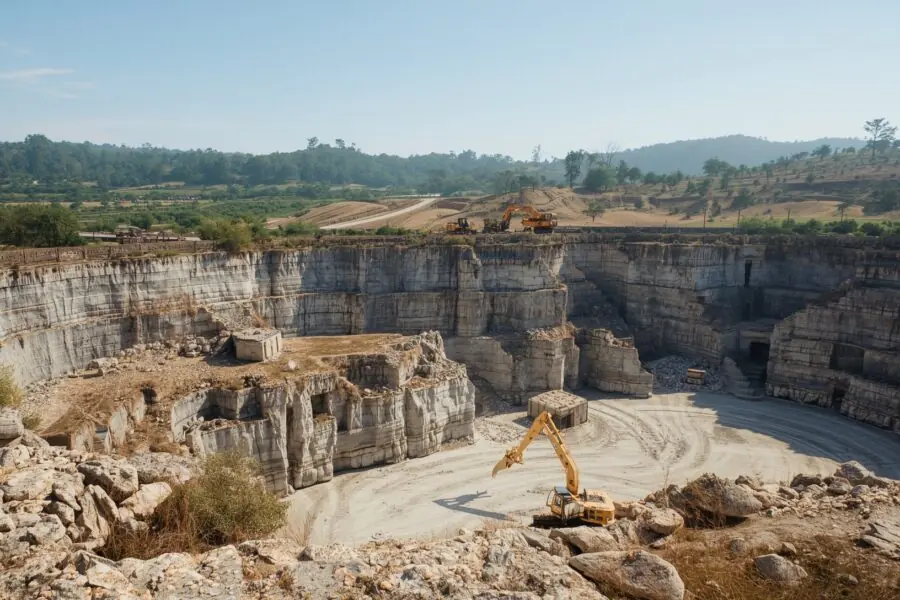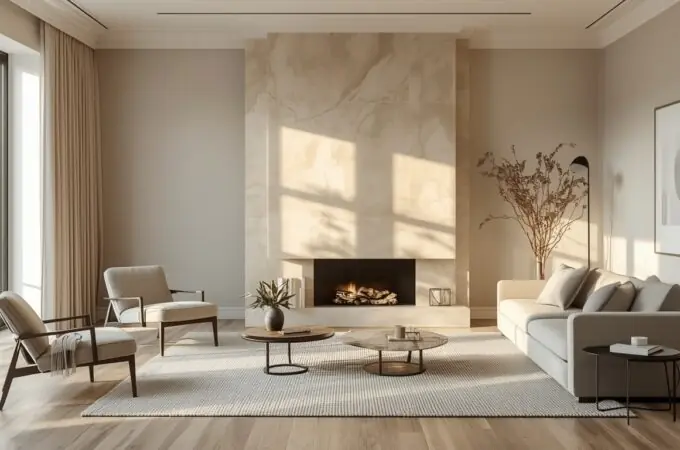DOLOMITE
Dolomite luxury that lasts a lifetime.
Refined strength, natural sophistication.
Brazilian quartzite is quickly becoming a top choice in natural stone design — combining the beauty of marble with the durability of granite. Quarried deep in the heart of Brazil’s mountains, quartzite features stunning color variations, dramatic veining, and exceptional resistance to wear.
In this article, we’ll explore what makes Brazilian quartzite unique, where it’s used, and its pros and cons for interior and exterior applications.
What Is Quartzite?
Quartzite is a metamorphic rock formed when sandstone is subjected to intense heat and pressure beneath the earth’s crust. Over millions of years, this process fuses the quartz grains into a dense, crystalline structure.
While quartzite can be found in many regions, Brazil is one of the largest producers of premium-quality slabs. Brazilian quartzite is particularly prized for its vibrant colors — including white, green, blue, gray, and even pink — and for its resistance to heat, etching, and scratching.

Popular Applications of Brazilian Quartzite
Thanks to its strength and aesthetic appeal, Brazilian quartzite is suitable for both residential and commercial settings, including:
- Kitchen countertops
- Bathroom vanities
- Wall cladding
- Flooring
- Outdoor kitchens
- Pool surrounds
- Fireplace surrounds
- Furniture and tabletops
Its durability allows it to be used even in high-traffic or outdoor environments — something many natural stones can’t match.
Advantages of Brazilian Quartzite
Here’s why designers and homeowners love Brazilian quartzite:
Exceptional Durability
Quartzite is one of the hardest natural stones available. It resists scratches, chips, and daily wear better than marble or even some granites.
Heat & UV Resistance
It can handle hot pots, direct sunlight, and outdoor exposure without damage — making it ideal for exterior applications.
Low Maintenance
When sealed properly, quartzite is relatively non-porous and easy to clean with just soap and water.
Marble-Like Appearance
Many Brazilian quartzites resemble marble but without the fragility. This allows for a luxurious look with better performance.
Natural Variety
Each slab of Brazilian quartzite is a one-of-a-kind natural masterpiece, with intricate veining, waves, and color blending.

Disadvantages of Brazilian Quartzite
Despite its advantages, there are a few things to keep in mind:
Higher Cost
Premium quality and exotic appearance mean quartzite can be more expensive than other natural stones.
Requires Sealing
Like many natural stones, quartzite needs to be sealed regularly to prevent staining — especially if installed in kitchens or bathrooms.
Mislabeling Issues
Some stones sold as “quartzite” may actually be softer dolomite or marble. Always buy from trusted suppliers and ask for test results.
Difficult to Fabricate
Because it’s extremely hard, quartzite can be challenging to cut and shape. It requires special tools and experienced fabricators.
Brazilian Quartzite vs. Other Stones
| Feature | Brazilian Quartzite | Marble | Granite |
| Durability | ★★★★★ | ★★☆☆☆ | ★★★★☆ |
| Scratch Resistance | ★★★★★ | ★★☆☆☆ | ★★★★☆ |
| Heat Resistance | ★★★★★ | ★★★☆☆ | ★★★★☆ |
| Appearance | ★★★★☆ | ★★★★★ | ★★★☆☆ |
| Maintenance | ★★★★☆ | ★★☆☆☆ | ★★★★☆ |
A Powerful and Beautiful Stone
Brazilian quartzite offers a rare combination of elegance and resilience. Whether you’re seeking a dramatic kitchen centerpiece or a low-maintenance surface for your outdoor space, quartzite delivers.
Its bold patterns, exotic color ranges, and superior performance make it a top-tier choice for architects, designers, and homeowners alike. Just be sure to work with reputable suppliers and experienced installers — and you’ll enjoy this beautiful stone for decades to come.











